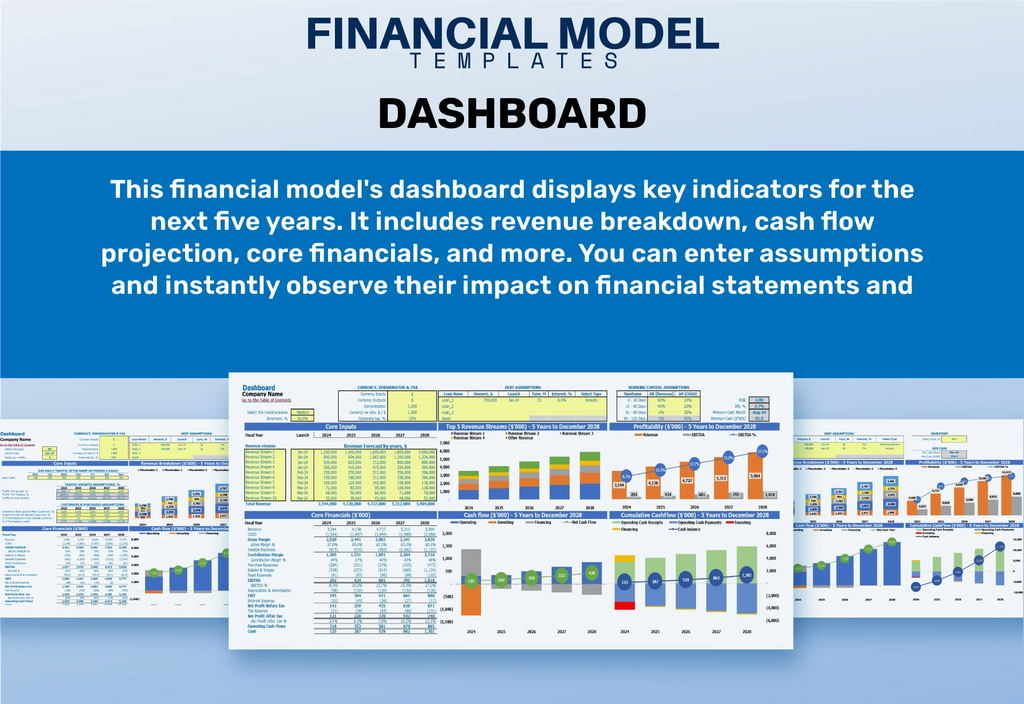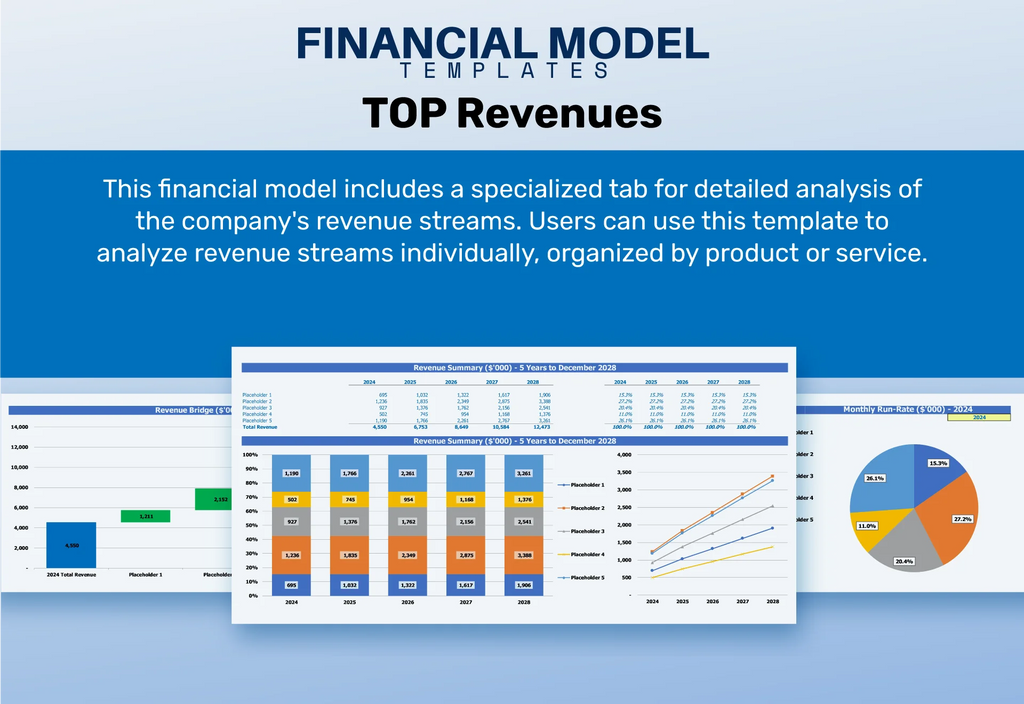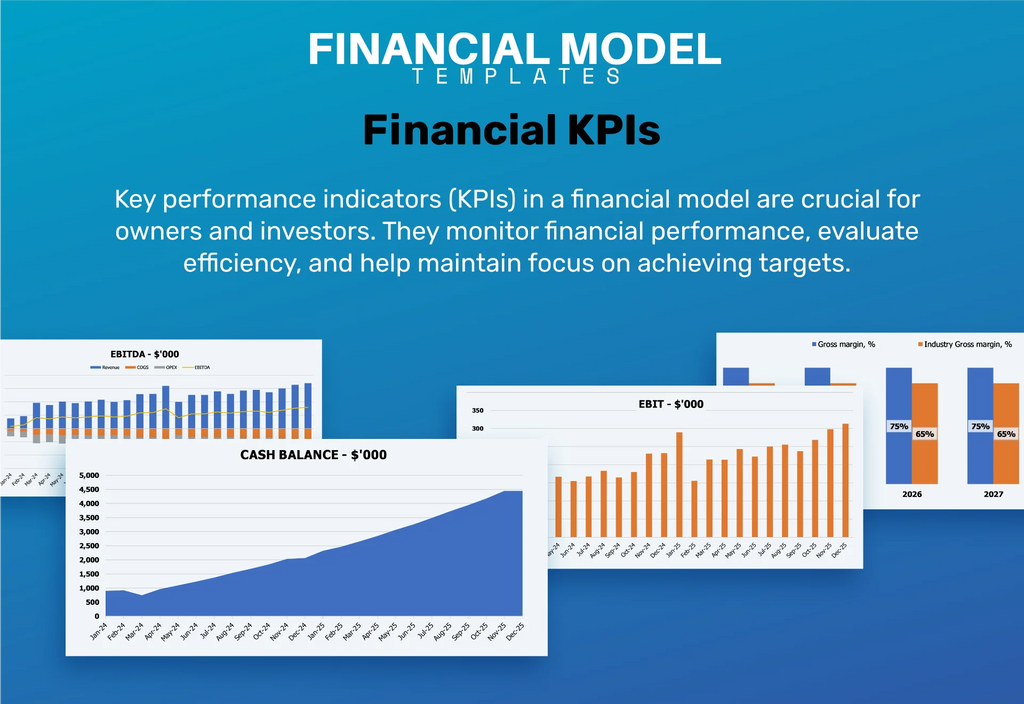Art Conservation Cleaning Financial Model

- ✔ 5-Year Financial Projections
- ✔ 100% Editable
- ✔ Investor-Approved Valuation Models
- ✔ MAC/PC Compatible, Fully Unlocked
- ✔ No Accounting Or Financial Knowledge
Art Conservation Cleaning Financial Model
Bundle Includes:
ALL IN ONE MEGA PACK - CONSIST OF:
art conservation cleaning Financial Model/Business Plan Excel Template
Pitch Deck Template For PowerPoint, Keynote & Google Slides
Business Plan Guide and Business Plan Template in MS Word Format
Financial Dashboard in Excel To Track Your Business Performance
ART CONSERVATION CLEANING FINANCIAL MODEL FOR STARTUP INFO
Highlights
This comprehensive art conservation cleaning proforma business plan template serves as a crucial tool for museums and art institutions, focusing on effective budgeting for conservation projects and employing cost-effective conservation solutions. It generates detailed cash flow formats in Excel, along with a financial dashboard that analyzes the impact of conservation on art value through a rigorous valuation of art conservation. By integrating preservation project financial models and art maintenance financial frameworks, stakeholders can explore various funding for art restoration options, including grants and investment opportunities. This template also aids in financial planning for restorations and provides insights into conservation finance strategies, ultimately promoting financial sustainability in art preservation initiatives.
The art conservation financial model addresses critical pain points by providing a comprehensive budgeting framework tailored for museums and art preservation projects. It streamlines conservation finance strategies, enabling users to predict costs and secure funding for art restoration effectively. By incorporating art cleaning methodologies and conservation project cost estimation, the template facilitates effective financial planning for restorations and capital budgeting. Users can leverage financial analysis in art preservation, optimizing funding for art conservation grants, and investing in art preservation initiatives. The adaptability of the Excel model ensures that budgeting for conservation projects remains dynamic, allowing for real-time updates and insights into the impact of conservation on art value, thereby promoting financial sustainability in art care funding sources.
Description
The Art Conservation Cleaning Financial Model, developed by our team, encompasses a comprehensive financial framework that aids in making effective financial plans and projections for art restoration projects, specifically tailored for cleaning methodologies. This five-year forecast is designed to facilitate efficient management and organization of art conservation businesses, allowing stakeholders to focus on marketing and client management while minimizing the complexities of financial calculations. The adaptable Excel template generates detailed monthly and yearly financial projections, including profit and loss statements, balance sheets, and cash flow forecasts, while also incorporating discounted cash flow valuation calculations based on projected free cash flows. Additionally, it computes essential financial performance metrics and KPIs necessary for evaluating business profitability and liquidity, aligning with conservation finance strategies that emphasize cost-effective solutions for art preservation and funding opportunities.
ART CONSERVATION CLEANING FINANCIAL MODEL REPORTS
All in One Place
This user-friendly model offers flexible solutions for art conservation budgeting. It features automated formulas that ensure all updates reflect seamlessly across your financial plans for restorations. Users can easily adjust assumptions in a centralized worksheet; simply input new parameters in the highlighted cells. The financial projections tool then automatically generates an updated income statement. By leveraging effective financial analysis and cost-effective conservation solutions, this model supports sustainable funding for art restoration, enhancing the preservation of valuable artworks while maintaining financial viability. Invest in art preservation with confidence, knowing your budget is in expert hands.

Dashboard
To effectively analyze financial aspects within art conservation, comprehensive data is essential. Utilizing a pro forma template in Excel can streamline this process, helping museums organize financial data, prepare projected balance sheets for five years, and create profit and loss statements. This facilitates a clearer understanding of budgeting for conservation projects and aids in the evaluation of funding for art restoration. Customizable graphs and charts enhance efficiency, offering insights into art preservation financial sustainability and the impact of conservation on art value, ultimately guiding strategic investments in art care and restoration efforts.

Business Financial Statements
Financial analysis in art preservation relies on three key statements. The Income Statement tracks income and expenditures, including depreciation and taxes, essential for understanding funding for art restoration. The Balance Sheet reflects assets, liabilities, and shareholders' equity, crucial for capital budgeting for museums. Finally, the Cash Flow Statement reveals cash inflows and outflows, helping assess whether the institution is financially sustainable. By employing these financial frameworks, museums can develop effective conservation finance strategies, ensuring cost-effective conservation solutions while maintaining art value and integrity.

Sources And Uses Statement
The financial projections spreadsheet is essential for articulating sources and uses of cash in art conservation. It clearly outlines income streams and expense allocations, vital for effective budgeting for conservation projects. A comprehensive grasp of this data enhances financial planning for restorations, allowing museums to implement cost-effective conservation solutions. Understanding these financial dynamics not only ensures the sustainability of art preservation efforts but also maximizes overall organizational performance and profitability. Investing in robust conservation finance strategies will ultimately impact the valuation of art conservation and secure funding for future restoration initiatives.

Break Even Point In Sales Dollars
A break-even point calculation is essential in art conservation economics, as it determines when total costs match total revenue. This analysis aids museums in assessing revenue needed to fund restoration projects. Utilizing a pro forma template can also help establish pricing for conservation services. By evaluating sales costs per unit against variable costs, organizations can ascertain the contribution margin, which significantly influences profitability. This financial analysis is vital for museums to develop cost-effective conservation solutions and ensure the sustainability of art preservation efforts through strategic budgeting and funding opportunities.

Top Revenue
The anticipated revenue section of the projected cash flow statement template effectively summarizes your organization's income, detailed by individual art preservation initiatives. This financial planning tool also offers an annual breakdown of diverse revenue streams, including total earnings from each conservation project and corresponding financial analysis. By utilizing such frameworks, museums can enhance their budgeting for conservation projects, ensuring cost-effective art restoration techniques and sustainable funding sources, ultimately maximizing the impact of conservation on art value.

Business Top Expenses Spreadsheet
In the Top Revenue tab of this model template, users can forecast demand reports for individual art restoration services. This analysis simulates the profitability and financial appeal of various conservation projects, while revealing insights into revenue depth and bridge dynamics. By evaluating forecasted demand trends—such as weekday versus weekend needs—museums can optimize resource allocation, from manpower to art care funding. This strategic approach not only supports effective budgeting for conservation projects but also enhances financial sustainability in art preservation efforts, paving the way for impactful restoration initiatives.

ART CONSERVATION CLEANING FINANCIAL PROJECTION EXPENSES
Costs
The art conservation cleaning feasibility study template excels in reflecting the essential initial costs for developing effective conservation projects. Early investment is vital to ensure balanced funding, preventing financial losses or underfunding. Our tailored P&L template offers comprehensive insights into budgeting for conservation projects, focusing on cost-effective conservation solutions and sustainable financial planning for restorations. By integrating expense management strategies, this template empowers museums to navigate conservation economics, securing funding for art restoration while enhancing the value of their collections through meticulous preservation efforts.

CAPEX Spending
A robust capital expenditure forecast is crucial for effective financial planning in art conservation projects. It serves as a foundational element within a museum's budget, guiding funding for art restoration and ensuring strategic investments. By accurately estimating expenditures, institutions can effectively monitor cash flow and allocate resources toward impactful conservation strategies. Emphasizing detailed budgeting enhances financial sustainability, allowing for the exploration of grant opportunities and cost-effective solutions. Ultimately, a well-structured CAPEX plan not only supports immediate restoration needs but also preserves art's value for future generations.

Loan Financing Calculator
Our financial projections template for art preservation includes a comprehensive loan amortization schedule. This tool precisely calculates both the principal and interest for any restoration project, offering insights into payment structures based on loan terms, interest rates, and frequency. Designed for professionals in art conservation, it facilitates effective budgeting for conservation projects, ensuring that capital is allocated wisely. By leveraging this template, organizations can explore funding for art restoration while maintaining financial sustainability and enabling impactful conservation outcomes.

ART CONSERVATION CLEANING EXCEL FINANCIAL MODEL METRICS
Financial KPIs
A robust financial plan template for art preservation should incorporate key performance indicators (KPIs) such as profitability, cash flow, and liquidity metrics. These outputs provide insights into both institutional performance and local industry benchmarks. Such data is vital for strategic investment in art restoration, ensuring financial sustainability and cost-effective conservation solutions. By integrating financial analysis and budgeting strategies specifically tailored for museums, stakeholders can better navigate funding opportunities and enhance project viability. Ultimately, this structured approach promotes informed decision-making, supporting the long-term value and impact of conservation initiatives.

Cash Flow Forecast Excel
Effective cash flow planning and forecasting are crucial for art preservation initiatives. Utilizing a comprehensive cash flow analysis spreadsheet allows museums to monitor their funding for art restoration projects. This tool not only tracks incoming and outgoing funds but also aids in developing cost-effective conservation solutions and capital budgeting for museums. By implementing art conservation financial strategies, organizations can enhance their financial sustainability. Such methodologies empower stakeholders to make informed decisions, ensuring the impactful preservation of art while maximizing its value through strategic financial planning. Investing in art conservation ultimately fosters long-term stability and growth within the cultural sector.

KPI Benchmarks
Leverage our advanced financial benchmarking tool to enhance your art restoration initiatives. This intuitive model facilitates industry comparisons, enabling museums to assess their conservation finance strategies, budgeting practices, and overall performance against peers. By analyzing various financial indicators, organizations can identify gaps and adapt cost-effective conservation solutions. This benchmarking approach is crucial for art preservation projects, guiding financial planning for restorations and securing funding opportunities. A comprehensive understanding of conservation project cost estimation ensures financial sustainability while maximizing the impact of conservation on art value. Invest wisely in art preservation and elevate your institution's operational efficiency.

P&L Statement Excel
The Profit and Loss Statement serves as a vital tool for stakeholders, showcasing key revenue streams and expense categories in art restoration. By assessing profitability and financial structure, this statement highlights the project's potential for sustainable funding and effective budgeting for conservation efforts. Utilizing financial forecasts within a projected income statement template allows for informed planning, enabling users to gauge the future profitability of art conservation initiatives. Emphasizing financial analysis in art preservation ensures cost-effective solutions and strategic investment in art maintenance and cleaning methodologies, ultimately enhancing the impact of conservation on overall art value.

Pro Forma Balance Sheet Template Excel
The projected balance sheet is essential for a startup, showcasing both current and long-term assets, liabilities, and equity. This financial analysis tool is crucial for evaluating the company's financial health and sustainability. It provides insights necessary for calculating key ratios, thereby enhancing financial planning for restorations and conservation projects. By understanding these metrics, stakeholders can make informed decisions regarding budgeting for art preservation and securing funding for art restoration initiatives, ultimately impacting the valuation of art conservation efforts and their long-term viability.

ART CONSERVATION CLEANING FINANCIAL PROJECTION TEMPLATE VALUATION
Startup Valuation Model
Our art conservation cleaning pro forma template incorporates two robust valuation methodologies: discounted cash flow (DCF) and weighted average cost of capital (WACC). These techniques provide a comprehensive financial analysis in art preservation, allowing for accurate forecasting of financial performance. By utilizing these art preservation financial sustainability strategies, stakeholders can access critical insights into budgeting for conservation projects, ensuring effective allocation of resources and maximizing the impact of conservation on art value. This template is essential for museums seeking cost-effective conservation solutions and effective financial planning for restorations.

Cap Table
The financial projection startup effectively supports art conservation budgeting, enabling accurate estimates for various financial indicators, including funding for art restoration. Its structured cap table model enhances clarity, offering users a robust tool for financial analysis in art preservation. By employing these innovative strategies, stakeholders can identify cost-effective conservation solutions and develop sustainable financial frameworks for preservation projects. Ultimately, this platform empowers museums and galleries to invest wisely in art maintenance, fostering long-term valuation and impact on art conservation economics.

KEY FEATURES
Implementing effective financial models ensures sustainable funding for art restoration, maximizing the impact of conservation on overall art value.
A robust financial model enhances art conservation initiatives by ensuring sustainable funding and efficient budgeting for preservation projects.
Effective financial models in art conservation maximize funding opportunities while ensuring cost-effective preservation strategies for invaluable artworks.
Utilizing a financial model streamlines art conservation budgeting, enabling effective planning while minimizing complexity and costs for preservation projects.
Effective financial models for art preservation enhance budgeting accuracy and unlock funding opportunities, ensuring sustainable conservation success.
Implementing financial models for art conservation enhances budget efficiency and identifies viable funding sources for restoration projects.
A robust financial model enhances budgeting for conservation projects, ensuring effective funding for art restoration and long-term preservation sustainability.
This comprehensive financial model empowers art conservators to effectively plan and allocate resources for successful preservation projects.
Implementing effective **financial models for preservation projects** ensures sustainable **funding for art restoration**, maximizing **conservation impact on art value**.
Implementing effective financial models enhances budgeting efficiency for art conservation projects, ensuring sustainable preservation and optimal resource allocation.
ADVANTAGES
Utilizing a financial model for art conservation cleaning enhances budgeting accuracy and secures sustainable funding for restoration projects.
Utilizing a financial model for art conservation enhances project budgeting, ensuring sustainable funding and effective resource allocation for restoration efforts.
Implementing a financial model for art conservation projects optimizes budgeting and enhances long-term preservation sustainability for museums.
Implementing a robust financial model enhances budgeting for conservation projects, ensuring sustainable funding for art preservation efforts.
Implementing a robust financial model enhances budgeting for conservation projects, ensuring effective funding and long-term sustainability in art preservation.




